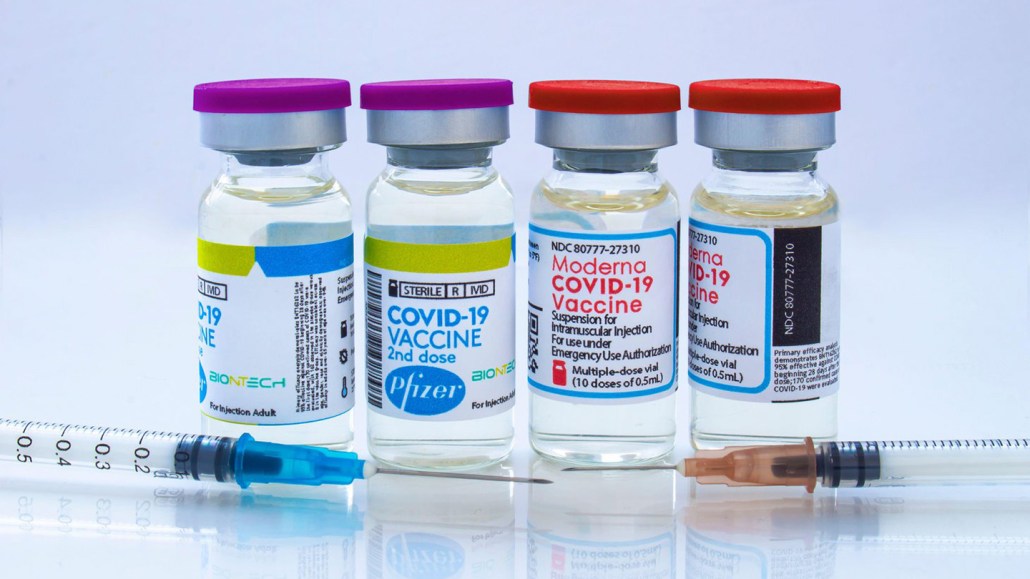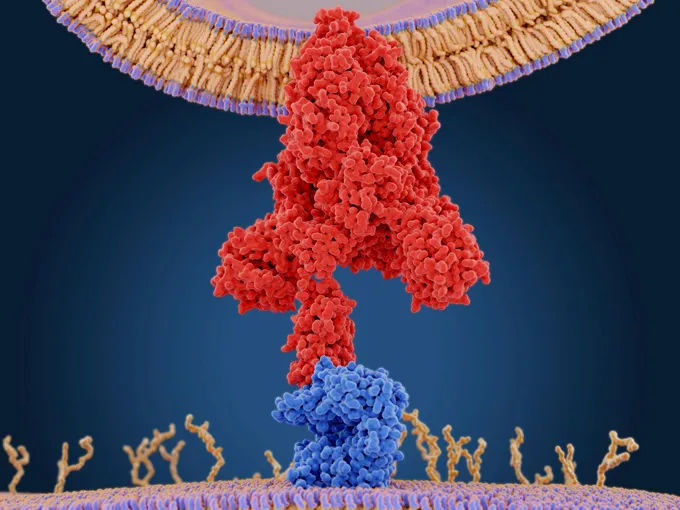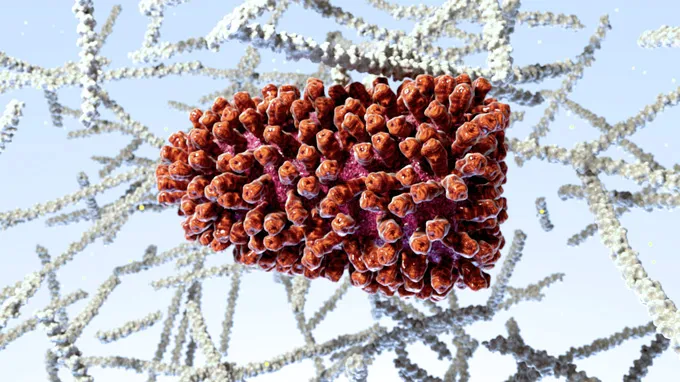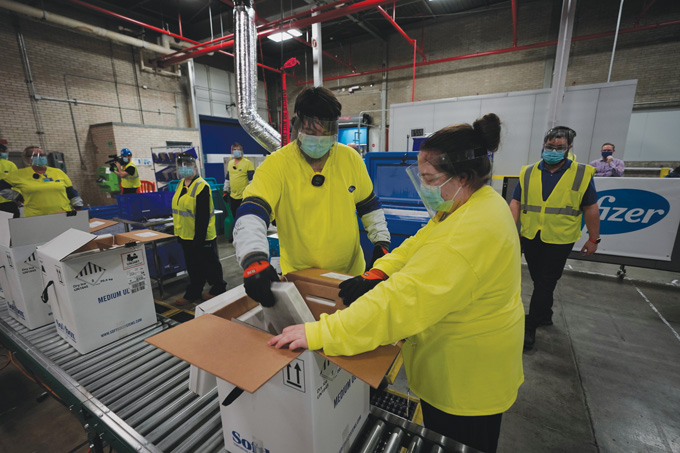How COVID-19 vaccines were made so quickly without cutting corners
The spread of the virus and the public’s attention to science helped to shorten the timeline

Cuts in time spent waiting on experimental results and public interest in science accelerated COVID-19 vaccine development.
Marvin Tolentino/Alamy Stock Photo
Six months after the first COVID-19 shots started going into arms in the United States, the pace of vaccination has slowed. That’s prompted White House officials to scale back their goal of getting at least one dose to 70 percent of all U.S. adults by July 4; they’re now aiming for 70 percent of those 27 and older.
Even so, more than 1 in 5 Americans say they won’t get vaccinated, according to a recent poll by the American Psychiatric Association. Among the reasons that often pop up are worries that the vaccines were developed too fast: Normally, drug research takes years or even decades from idea to reality. The first vaccines to combat COVID-19 were developed, tested and given emergency use authorization in 11 months.
Driven by a global urgency and underpinned by decades of prior work on vaccine technology, vaccine developers found a way to chop not just days or months, but years off the timeline (SN: 2/21/20). What was jettisoned was not the science, or the safety tests, but rather the wait time baked into the development process — waiting for results and waiting for regulatory approvals (SN: 7/10/20).
By comparing the new vaccines with earlier drugs that have used the same tech under more traditional research timelines, it is possible to calculate approximately how much time got chopped off the development process once shots were ready to go into arms: roughly four years. Here’s how.
Unlocking the coronavirus’ secrets
To back up a bit first, designing the vaccines began far earlier than the jabs-in-arms stage. It began with deciphering the exact genetic makeup of SARS-CoV-2, the virus that causes COVID-19 (SN: 12/11/20). By early January 2020, that genetic blueprint was in hand and the first vaccines to test were ready just a few weeks later.

For some perspective, researchers first deciphered, or sequenced, the entire human genome over a span of almost 13 years, starting in 1990 and wrapping up in 2003 (SN: 1/17/03). Because of advances in computers, the same task now can take only hours.
Most crucially, researchers now had the genetic instructions for making the spike proteins that the virus uses to break into cells — a key ingredient for making the vaccines. Jutting out from the virus’ surface, these spike proteins make an easy target for the immune system to recognize. Researchers knew to zero in on those proteins thanks to decades of work studying coronaviruses, including two that have caused other outbreaks of human diseases — SARS and MERS. That work also identified the best form of the protein to use: a stable form just before the virus fuses with a cell it’s about to infect.
Finding a delivery system
Those instructions could then be fed directly into pre-made delivery vehicles that carry the genetic code to cells to induce an immune response. Scientists had already built these rapid, genetically based templates largely because of the ongoing battle against HIV, says Tom Denny, Chief Operating Officer of the Duke Human Vaccine Institute in Durham, N.C.
“In the last 10 to 15 years, there’ve been major teams around the world … trying to understand what needed to occur to make a protective HIV vaccine,” Denny says. Those efforts have “helped us in our battle with this current pandemic.”
These vehicles are like the Potato Head toys of the vaccine development world: Instead of swapping in different facial features, information specific to each virus gets plugged in.
Denny calls it “plug-and-play” vaccine manufacturing. Decades of trying to attack HIV has created a library of safe weapons to use quickly against any new would-be viral marauders. “We got lucky,” Denny says, that the developed platforms have worked so well for this new deadly virus.
One of the templates directly carries a nonfunctional, partial strand of viral mRNA to cells in the body, delivering instructions for those cells to create copies of the protein that the immune system recognizes as foreign. That’s what’s used in the Pfizer-BioNTech and Moderna shots.
The mRNA for the coronavirus’ spike proteins gets packaged inside tiny bubbles of fat called lipid nanoparticles. These tiny fat bubbles have been around for decades and safely used for dozens of other drugs, some approved, others still in the pipeline. So all that needed to be changed to target SARS-CoV-2 were the directions nestled inside.
The contents of the fat bubbles are known as their “payload,” says Vicki Stronge (SN: 11/20/20). She’s the director of product management at Precision NanoSystems in Vancouver, which manufactures equipment and compounds for the development of lipid nanoparticles. She explains why those fat bubbles are so crucial: If the mRNA is injected alone outside a bubble, it breaks down quickly, degrading into harmless biological raw bits and pieces that get recycled by our bodies.
Benefiting from past research
Two key therapies — one still in the works and one approved — paved the way for COVID-19 vaccine developers to hit the ground running with RNA-based templates.
One therapy, made by Germany-based CureVac, is the first vaccine to reach human trials that was developed using mRNA to fight an infectious disease. It targets the rabies virus and was injected into human volunteers starting in 2013. Decades earlier, in 1971, researchers developed the first syringefuls that they thought were safe for humans, which they initially tested by injecting themselves. The first version of the mRNA-based rabies vaccine prompted only a weak immune system response but did show that the technology was safe. A newer version of this rabies vaccine is starting to show promising results in clinical trials. (CureVac is also developing an mRNA COVID-19 vaccine, although early results have been disappointing.)

The other therapy is patisiran, an RNA-based drug for a rare but often fatal heredity disease in which amyloid proteins build up in nerves and some organs. It uses the same design based on lipid nanoparticles as the mRNA-based COVID-19 vaccines, just with a different payload inside.
Years of data from monitoring patients who had been injected with these RNA fragments wrapped in lipid nanoparticles shows they’re safe, says Sascha Tuchman, a hematologist-oncologist at the University of North Carolina at Chapel Hill who oversaw a site for the Phase III patisiran trials. Patients who receive a dose of patisiran have a lower risk of side effects than those who got injections with placebo saline. And when it comes to long-term negative consequences from RNA and lipid nanoparticles, Tuchman says, “we haven’t seen anything additional in terms of the safety that would indicate that there is some reason to be concerned.”
Six years after the first shots began being tested, the FDA approved patisiran, a little faster than standard pace for new treatments. That makes it a good comparison to show where the COVID-19 vaccines were able to cut time, not counting the decades of research of development that got us to this point. So let’s start the clock.
Recruiting volunteers
After the first syringefuls of prospective COVID-19 vaccine emerged from the “plug-and-play” mRNA labs, years were removed from the timeline by cutting out the long stretches of pure waiting that are built into most human testing. Driven by the urgency of the pandemic, nearly half a million people in America alone had offered up their deltoids for the cause through the COVID-19 Prevention Network in a matter of months, in many cases even before the first public inklings of success, according to the American Medical Association.
For instance, it took just under 16 weeks to recruit and enroll more than 43,000 volunteers for the final phases of testing Pfizer’s vaccine. When volunteer recruitment began for clinical trials of the rabies mRNA vaccine in 2013, it took 813 days to get 101 participants enrolled. Based on this comparison, that’s roughly 730 days — nearly two years — saved in recruiting alone.

Getting fast results
Another, more dismal factor contributed to the scientific speed: How fast the virus spread.
Scientists can begin to calculate a vaccine’s efficacy when a sufficient number of people in the group that got a placebo rather than a vaccine have gotten infected naturally (SN: 10/4/20). If an outbreak peters out, it takes longer to reach that threshold. That’s true too if a virus naturally spreads more slowly — say a virus like HIV, herpes or human papillomavirus, or HPV, which are transmitted primarily through sex. In contrast, just breathing or talking can spread SARS-CoV-2 — and everybody does that (SN: 4/2/20).
Loosely comparing vaccine trials for COVID-19 with HPV vaccine trials offer clues to just how many days may have been lopped off the COVID-19 timeline because of the new virus’s astronomical rate of spread. The HPV trials took about 529 days, or 1.4 years, to reach a point at which efficacy could be calculated, when the placebo group got to an infection rate of 3.8 percent.
The Pfizer Phase II/III coronavirus trial, in contrast, got initial efficacy results for the first of its two doses in just 105 days, when it hit a nearly 2.4 percent infection rate in the placebo group. That’s 424 days faster than HPV. Why? Because just months into the pandemic, SARS-CoV-2 was infecting hundreds of thousands of people per day globally.
Jumping the line
There was also waiting time recouped from the U.S. Food and Drug Administration’s review process. Typically, it takes the FDA 10 months to review a new drug.
However, with the COVID-19 death toll rising, the FDA rushed all coronavirus vaccines to the front of the review lines. The Pfizer vaccine got reviewed and authorized for emergency use only 21 days after submission and the Moderna vaccine in just 19 days (SN: 12/11/20; SN: 12/18/20). Compared with a more typical 10-month wait time, that’s about another 283 days saved.
In total, that’s 1,437 days, or 3.9 years, cut off the normal timeline for a new vaccine. And that doesn’t include other time savings, such as putting the ethics reviews at the front of the line. Add that saved time to the 11 months it actually took to get the first COVID-19 vaccines and it would add up to nearly five years — remarkably close to the six years needed to test and approve patisiran.
In a final jolt of speed, some pharmaceutical companies, bolstered by big vaccine contracts and research cash from the U.S. government’s Operation Warp Speed, were also churning out doses during clinical trials in the hopes that the vaccines would work. Once the companies had emergency use authorization in hand, they were ready to ship doses immediately.
Decades of previous work combined with a fast-moving virus, a public willingness to help and elimination of wait times drove the rapid development of COVID-19 vaccines. No safety steps were skipped, says Stanley Plotkin, emeritus professor of pediatrics at the University of Pennsylvania, who is perhaps best known for his work developing the rubella vaccine.
The rapid creation of the COVID-19 vaccines, Plotkin says, are “a sea change in how to develop vaccines.” They are an example of what scientists can do when unfettered from waiting.








